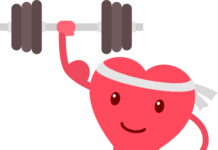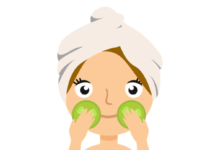For many of us the objective is to lose weight and look great. If this is the only that gets you inspired then you should know there are many other benefits as well. For example, exercise helps reduce anxiety, support your immune function and improves your ability to fall asleep faster.
Women who exercise have reported fewer symptoms of premenstrual syndrome, including feelings of irritability and being bloated. Increased blood flow to your brain improves function almost immediately and helps you to feel more focused after a workout. Regular exercise promotes the growth of new brain cells responsible for boosting memory and learning.
One of the key health benefits of exercise is that it helps normalize your glucose, insulin and leptin levels. This is a crucial factor for optimizing your overall health and preventing chronic disease. Recent studies indicates specific exercises may also add more years to your life span than others.
These Exercises May Increase Life Span Based on Studies
An epidemiological study of Danish men and women found playing tennis, badminton and other team sports helped individuals live longer than those who were sedentary. Even more interesting, these same people had a longer life span than those who participated in more solitary activities such as jogging, swimming and cycling.
A previous study evaluating exercise effects in more than 80,000 British men and women found those who played racquet sports also tended to outlive those who jogged. These results triggered the current Danish study, which widened the inquiry to look at a variety of sports and the association those have with premature death.
The data was gathered from nearly 8,500 adults as part of the Copenhagen City Heart Study. Limitations of the study included the facts that all who were enrolled were Caucasian, and had no history of heart disease, stroke or cancer. Individuals completed a health and lifestyle questionnaire and were monitored for approximately 25 years. During this time, nearly 4,500 of the participants died.
The health and lifestyle questionnaires asked participants about their physical activities each week and asked them to designate one workout as their primary form of exercise. Using these answers, researchers looked for associations between longevity and exercise after adjusting for factors such as education, drinking and socioeconomic background.
The data indicated a clear correlation between social sports and longevity. Although how long individuals spent doing these activities varied, it became apparent the duration did not necessarily affect the longevity of the participants. Coauthor Dr. James O’Keefe, cardiologist at St Luke’s Mid America Heart Institute, explained tennis likely took the top spot as it is intensely interactive.
In other words, people spent time talking with each other during the activity. The study did find activities normally enjoyed alone, such as running, weightlifting and swimming, still extended life and offered other health benefits. However, O’Keefe recommended for optimal benefit you may want to consider supplementing your workout with other activities that foster a social connection.

Benefits of Social Interactions
Research data have demonstrated emotional and physical health are inextricably linked, and there are significant health risks to social isolation. A study published in BMJ Heart found isolated and lonely individuals were at a significantly increased risk of heart attack and stroke. O’Keefe explained:
“For both mental and physical well-being and longevity, we’re understanding that our social connections are probably the single-most important feature of living a long, healthy, happy life. If you’re interested in exercising for health and longevity and well-being, perhaps the most important feature of your exercise regimen is that it should involve a playdate.”
Another study published in Heart found social isolation, but not loneliness, was associated with an increased risk of death in people with a history of heart disease. Having a support system appeared to mitigate some factors that led to a higher risk.
While not surprising, the researchers found the effects of isolation and loneliness may be compounded by other traits commonly found among those who enjoyed their own company. To further explore this the researchers surveyed almost 480,000 adults in the U.K. and measured health metrics, including height, weight, body mass index and grip strength.
The participants were then tracked for seven years. Isolation was associated with a 43 percent higher risk of first-time heart attack and a 39 percent higher risk of first-time stroke. Loneliness was associated with similar results.
However, after accounting for biological, health and socioeconomic factors, the increased risk of heart attack and stroke only ranged between 4 percent and 7 percent for loneliness and isolation. Another study evaluating the mental health benefits of exercise found an interesting pattern.
Those who exercised nearly 45 minutes per session experienced better mental health than those who favored marathon workouts. Sweating three to five times a week had a lower number of poor mental health days than either no exercise or working out more than five times a week, leading the researchers to conclude exercise for two to six hours a week may be the sweet spot for mental health.
Full Body Workouts Offer Increased Benefits
Limitations to the featured study made it difficult for researchers to generalize the results. O’Keefe pointed out how and why some sports may add additional years more than others is difficult to determine from an observational study. Although little of the exercise in this study was heavily intense, O’Keefe believes the different physical demands in some sports could play a role.
However, income and socioeconomic factors likely played a role in this study as well, as those who have sufficient money and leisure time to play tennis may also have the means to evaluate and use a variety of health care options. Yet another factor may be that racket sports are full-body workouts, and using your arms and legs makes your heart work harder. Cycling and jogging, two of the other sports studied in the featured research, primarily use your lower body and some core muscles.
Additionally, racket sports often require intense bursts of activity, much like a high-intensity interval training workout. As noted by the University of Rochester Medical Center:
“Racquet sports alternate bursts of high-intensity exercise while you score points, with brief rest periods while you pick up the ball and serve. This stop-and-start activity is similar to interval training. Playing racquet sports, or any active sport, [three] hours a week can cut your risk of developing heart disease and lower your blood pressure, according to the Cleveland Clinic Foundation.
One key to getting a good aerobic workout in tennis or racquetball is to keep your rest periods brief. Your heart will continue to work at an aerobic level, but without the sustained stress.”

There Is an Exercise ‘Sweet Spot’ Where You Reap the Greatest Reward
While the percentage of adults over 18 who meet the physical activity guidelines for both aerobic and muscle-strengthening activity only reaches 21 percent, there are those who meet and exceed those guidelines on a routine basis. But, like most things in life, too much of a good thing can do harm.
The current guidelines recommend at least 150 minutes per week of moderate physical activity or 75 minutes of vigorous physical activity. The guidelines do not list an upper limit. High intensity exercise for long periods of time may increase the risk of injury and heart issues, but no clearly defined guidelines exist for what constitutes “too much” exercise.
Research has demonstrated chronic training for and competing in extreme events, such as marathons and ultramarathons and very long-distance bike races, may trigger negative cardiovascular effects. In one study, those who exercised beyond 60 minutes saw a decrease in their antioxidant levels, along with an increase in arterial stiffening.
In another study, lifelong endurance athletes had a very high rate of myocardial fibrosis (stiffening of the heart muscle). This hardening of the heart cells may play a role in precipitating sudden cardiac arrest or inducing an irregular heartbeat. In a British study of more than a million healthy middle-aged women, researchers found those who exercised two to six times a week had the lowest cardiovascular risk compared to those who exercised either rarely or every day.
Brief and Intense Activity Equals to Longevity and Good Health
Similar results were found in a Danish study comparing the mortality rates of joggers against sedentary individuals. Those who did light to moderate running were less likely to die than nonexercisers or those who ran a fast pace for more than 2.5 hours per week.
A heavy exercise load each week can depress your immune system and increase inflammatory processes, potentially leading to increased risk of coronary changes and illness. Exercise intensity also plays an important role in determining how much exercise is enough.
Data found engaging in occasional vigorous exercise leads to additional reductions in the risk of premature death. When you include brief bursts of high-intensity activity, you may considerably slash the amount of workout time needed to enjoy the benefits.
These types of workouts, known as high-intensity interval training (HIIT), lead to immediate changes in your body, including reprogramming your muscles for strength, and stimulating your fast-twitch muscle fibers, the latter of which increases production of human growth hormone. HIIT also:
- Triggers mitochondrial biogenesis, which is important for longevity
- Alters mitochondrial enzyme content and activity
- Increases cellular energy production
- Decreases your risk of chronic disease
- Slows the aging process
Using a Variety of Exercises With HIIT
Research has suggested that working out smarter, not harder, can reap greater rewards in the long run. Performing short bursts of intense activity are much safer and effective than conventional cardiovascular workouts for your heart, general health, weight loss and overall fitness. The good thing is that you’re able to work out more efficiently and effectively in less time.
The American College of Sports Medicine recommends at least 20 minutes of vigorous activity 3x a week. It also mentions that HIIT workouts burn more calories than the conventional style workout since with HIIT, the body continues to burn calories after your workout is done. Another benefit to HIIT is the variety of workouts you can use to accomplish the goal.
It is important to remember HIIT is only one facet of a well-rounded program that should incorporate physical activities you enjoy, flexibility and strength training. Simply by making minor changes to your fitness program, you can turn a fun game of tennis with a friend into a fun and strenuous workout which will improve your life and longevity. So, why not serve an ace to your game?!





























Great article!